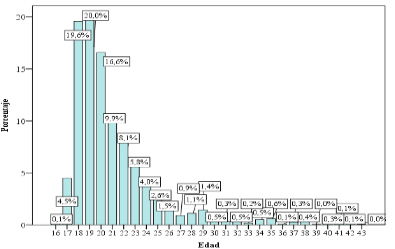Environmental Culture in Higher Education Students, 2020
Cultura Ambiental en estudiantes de educación superior, 2020
Show authors biography
La formación de profesionales sin cultura ambiental, es un atentado a la sostenibilidad en el desarrollo de las sociedades; debido que el nivel y calidad de educación, incide como factor preponderante en la toma de decisiones.
The research shows the level of environmental culture existing in university students. 2366 students from the various careers of a higher education institution were surveyed. For the evaluative phase, the modified Wisconsin survey was used, which analyzed the attitudes, behaviors and knowledge with an environmental focus in the students of the different academic units. The statistical program SPSS V22 was used; Descriptive statistics, non-parametric inferential statistics and multivariate statistics were applied. The average of environmental culture in the students was 5.1; which determined an unacceptable Environmental Culture Index. The incipient concern for environmental problems is shown in the poor correlation of the questions in the cluster analysis. The concern for environmental health risks and the belief of being able to contribute to the solution of environmental problems with actions, obtained the highest valuations in the total averages. Which shows that despite having superficial knowledge of the environmental reality and the importance of the actions they carry out, what they think does not take effect. The results show that teachers influence certain attitudes and behaviors of students, who must take advantage of the interaction space and academic activities to increase environmental culture through theoretical and practical motivational strategies. To make it; teachers must be constantly trained in the environmental area.
Article visits 965 | PDF visits




